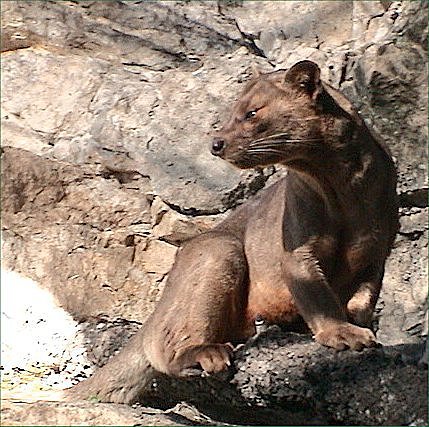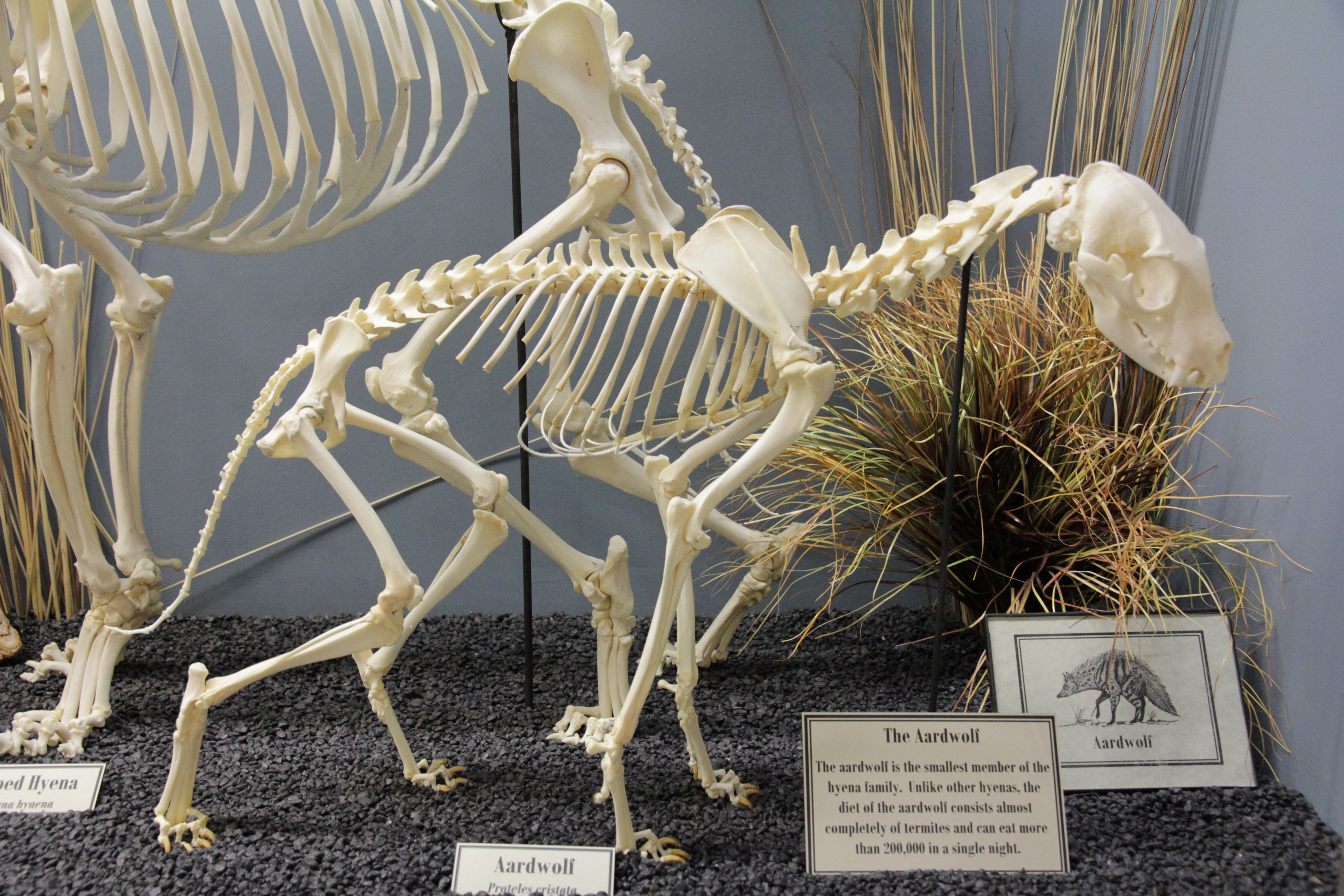|
Percrocutidae
Percrocutidae is an extinct family of hyena-like feliform carnivores endemic to Asia, Africa, and Southern Europe from the Middle Miocene through the Pliocene, existing for about . The first percrocutids are known from the middle Miocene of Europe and western Asia and belonged to the genus '' Percrocuta''. ''Percrocuta'' already had large premolars, but did not carry such a massive bite as the later form '' Dinocrocuta'', from the later Miocene. Originally, these carnivores were placed with the hyenas in the family Hyaenidae. Today, most scientists consider the Percrocutidae to be a distinct family - although usually as sister-taxa/immediate outgroup to Hyaenidae.Borja Figueirido, Zhijie JACK Tseng, Alberto Martín-SerraSkull Shape Evolution In Durophagous Carnivorans ''Evolution'' 67(7):1975-93 · July 2013 DOI: 10.1111/evo.12059 · Source: PubMed Sometimes it is placed with the family Stenoplesictidae Stenoplesictidae is the name of a polyphyletic family of extinct civet ... [...More Info...] [...Related Items...] OR: [Wikipedia] [Google] [Baidu] |
Percrocuta
''Percrocuta'' is an extinct genus of hyena-like feliform carnivores. It lived in Europe, Asia, and Africa, during the Miocene epoch. Characteristics With a maximum length of 1.50 m (5 ft), ''Percrocuta'' was much bigger than its modern relatives, but is not smaller than a 1.8 meters length for female lion. Like the spotted hyena, ''Percrocuta'' had a robust skull and powerful jaws. Similar to modern hyenids, its hind legs were shorter than the front legs, resulting in a characteristic sloping back. Classification ''Percrocuta'' was introduced as a genus of Percrocutidae in 1938. ''Percrocutas relation to the family Hyaenidae was debated until 1985, when ''Percrocuta'', '' Dinocrocuta'', '' Belbus'', and '' Allohyaena'' were accepted as the four genera of Percrocutidae. More recent evidence, however, has shown that ''Belbus'' and ''Allohyaena'' at least, are not percrocutids. Fossil evidence ''P. abessalomi'' is known only from a skull, two mandibles, and two teeth. T ... [...More Info...] [...Related Items...] OR: [Wikipedia] [Google] [Baidu] |
Feliform
Feliformia is a suborder within the order Carnivora consisting of "cat-like" carnivorans, including cats (large and small), hyenas, mongooses, viverrids, and related taxa. Feliformia stands in contrast to the other suborder of Carnivora, Caniformia (also Canoidea, "dog-like" carnivorans). The separation of the Carnivora into the broad groups of feliforms and caniforms is widely accepted, as is the definition of Feliformia and Caniformia as suborders (sometimes superfamilies). The classification of feliforms as part of the Feliformia suborder or under separate groupings continues to evolve. Systematic classifications dealing with only extant taxa include all feliforms into the Feliformia suborder, though variations exist in the definition and grouping of families and genera.Taxonomic references - extant species (1): Supporting descriptive information and picturesDiversity Web (online) – Feliformia/ref>Taxonomic references - extant species (2)Integrated Taxonomic Information Sys ... [...More Info...] [...Related Items...] OR: [Wikipedia] [Google] [Baidu] |
Hyena
Hyenas, or hyaenas (from Ancient Greek , ), are feliform carnivoran mammals of the family Hyaenidae . With only four extant species (each in its own genus), it is the fifth-smallest family in the Carnivora and one of the smallest in the class Mammalia. Despite their low diversity, hyenas are unique and vital components of most African ecosystems. Although phylogenetically closer to felines and viverrids, as part of suborder Feliformia, hyenas are behaviourally and morphologically similar to canids in several elements due to convergent evolution; both hyenas and canines are non-arboreal, cursorial hunters that catch prey with their teeth rather than claws. Both eat food quickly and may store it, and their calloused feet with large, blunt, nonretractable claws are adapted for running and making sharp turns. However, hyenas' grooming, scent marking, defecation habits, mating and parental behavior are consistent with the behavior of other feliforms. Hyenas feature prominently ... [...More Info...] [...Related Items...] OR: [Wikipedia] [Google] [Baidu] |
Dinocrocuta
''Dinocrocuta'' is an extinct genus of hyena-like feliform carnivores. It lived in Asia, and Africa, during the Miocene epoch. It had very strong jaws that were able to crush bones. It is estimated that their weight was around and their height to shoulder was to . Description Size The largest species, ''D. gigantea'', is known to have reached head-to-body lengths and shoulder heights of and for the largest individuals, with total skull lengths of . In terms of weight, it was originally stated to have weighed up to . However, the method used has been known to overestimate the masses of extinct carnivorans. Smaller individuals, such as the holotype specimen, hit around . Based on this smaller specimen, the largest specimens of this species would have reached weights close to , which rivals the mass of the largest tiger sub-species, and is only exceeded by ''Smilodon populator'', '' Panthera atrox'', and several amphicyonids and ursids. The other species were smaller in size, b ... [...More Info...] [...Related Items...] OR: [Wikipedia] [Google] [Baidu] |
Middle Miocene
The Middle Miocene is a sub-epoch of the Miocene Epoch made up of two stages: the Langhian and Serravallian stages. The Middle Miocene is preceded by the Early Miocene The Early Miocene (also known as Lower Miocene) is a sub-epoch of the Miocene Epoch made up of two stages: the Aquitanian and Burdigalian stages. The sub-epoch lasted from 23.03 ± 0.05 Ma to 15.97 ± 0.05 Ma (million years ago). It was p .... The sub-epoch lasted from 15.97 ± 0.05 Ma to 11.608 ± 0.005 Ma (million years ago). During this period, a sharp drop in global temperatures took place. This event is known as the Middle Miocene Climate Transition. For the purpose of establishing European Land Mammal Ages this sub-epoch is equivalent to the Astaracian age. External links GeoWhen Database - Middle Miocene .02 02 * * {{geochronology-stub ... [...More Info...] [...Related Items...] OR: [Wikipedia] [Google] [Baidu] |
Prehistoric Mammal Families
Prehistory, also known as pre-literary history, is the period of human history between the use of the first stone tools by hominins 3.3 million years ago and the beginning of recorded history with the invention of writing systems. The use of symbols, marks, and images appears very early among humans, but the earliest known writing systems appeared 5000 years ago. It took thousands of years for writing systems to be widely adopted, with writing spreading to almost all cultures by the 19th century. The end of prehistory therefore came at very different times in different places, and the term is less often used in discussing societies where prehistory ended relatively recently. In the early Bronze Age, Sumer in Mesopotamia, the Indus Valley Civilisation, and ancient Egypt were the first civilizations to develop their own scripts and to keep historical records, with their neighbors following. Most other civilizations reached the end of prehistory during the following Iron Age. ... [...More Info...] [...Related Items...] OR: [Wikipedia] [Google] [Baidu] |
Miocene Carnivorans
The Miocene ( ) is the first geological epoch of the Neogene Period and extends from about (Ma). The Miocene was named by Scottish geologist Charles Lyell; the name comes from the Greek words (', "less") and (', "new") and means "less recent" because it has 18% fewer modern marine invertebrates than the Pliocene has. The Miocene is preceded by the Oligocene and is followed by the Pliocene. As Earth went from the Oligocene through the Miocene and into the Pliocene, the climate slowly cooled towards a series of ice ages. The Miocene boundaries are not marked by a single distinct global event but consist rather of regionally defined boundaries between the warmer Oligocene and the cooler Pliocene Epoch. During the Early Miocene, the Arabian Peninsula collided with Eurasia, severing the connection between the Mediterranean and Indian Ocean, and allowing a faunal interchange to occur between Eurasia and Africa, including the dispersal of proboscideans into Eurasia. During the late ... [...More Info...] [...Related Items...] OR: [Wikipedia] [Google] [Baidu] |




